Refine search
Actions for selected content:
72 results
15 - Shenoute of Atripe, I See Your Eagerness (Discourses 5, Work 1) and Some Kinds of People Sift Dirt and Whoever Seeks God Will Find (Discourses 5, Works 2 and 3)
- from Part II - Forming and Overseeing the Community
-
-
- Book:
- The Cambridge Edition of Early Christian Writings
- Published online:
- 19 May 2025
- Print publication:
- 12 June 2025, pp 260-290
-
- Chapter
- Export citation
14 - Faustus of Riez, Homily on Saint Maximus, Bishop and Abbot
- from Part II - Forming and Overseeing the Community
-
-
- Book:
- The Cambridge Edition of Early Christian Writings
- Published online:
- 19 May 2025
- Print publication:
- 12 June 2025, pp 249-259
-
- Chapter
- Export citation
13 - The Monastic Rules of Lérins and the Counsels of Porcarius
- from Part II - Forming and Overseeing the Community
-
-
- Book:
- The Cambridge Edition of Early Christian Writings
- Published online:
- 19 May 2025
- Print publication:
- 12 June 2025, pp 230-248
-
- Chapter
- Export citation
25 - Callinicus, The Life of Hypatius prol.–19, 23, 25–30, 32–47, 49–56
- from Part IV - Policing the Community
-
-
- Book:
- The Cambridge Edition of Early Christian Writings
- Published online:
- 19 May 2025
- Print publication:
- 12 June 2025, pp 497-546
-
- Chapter
- Export citation
12 - Hilary of Arles, Sermon on the Life of Saint Honoratus
- from Part II - Forming and Overseeing the Community
-
-
- Book:
- The Cambridge Edition of Early Christian Writings
- Published online:
- 19 May 2025
- Print publication:
- 12 June 2025, pp 199-229
-
- Chapter
- Export citation
Death in the monastery: Dying in the poetry of a Carthusian monk
-
- Journal:
- Scottish Journal of Theology , First View
- Published online by Cambridge University Press:
- 17 March 2025, pp. 1-17
-
- Article
- Export citation
2.1 - The Monastery
- from History 2 - Mechanisms
-
-
- Book:
- The New Cambridge History of Russian Literature
- Published online:
- 31 December 2024
- Print publication:
- 12 December 2024, pp 227-240
-
- Chapter
- Export citation
Faith embodied: a tattooed individual from medieval Ghazali
-
- Article
-
- You have access
- Open access
- HTML
- Export citation
11 - Sexuality in Buddhist Traditions
-
-
- Book:
- The Cambridge World History of Sexualities
- Published online:
- 26 April 2024
- Print publication:
- 16 May 2024, pp 228-249
-
- Chapter
- Export citation
Introduction
-
- Book:
- Ways of Living Religion
- Published online:
- 07 March 2024
- Print publication:
- 14 March 2024, pp 1-13
-
- Chapter
- Export citation
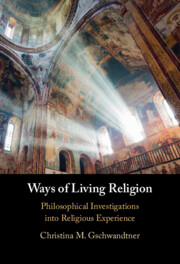
Ways of Living Religion
- Philosophical Investigations into Religious Experience
-
- Published online:
- 07 March 2024
- Print publication:
- 14 March 2024
38 - Hierarchies of Knowledge in the Works of Bede
-
-
- Book:
- The Intellectual World of Late Antique Christianity
- Published online:
- 05 October 2023
- Print publication:
- 26 October 2023, pp 729-751
-
- Chapter
- Export citation
27 - Condemning the Glutton of the Monastery: Rhetorical Strategies and the Epistemology of Philoxenos of Mabbug
-
-
- Book:
- The Intellectual World of Late Antique Christianity
- Published online:
- 05 October 2023
- Print publication:
- 26 October 2023, pp 516-529
-
- Chapter
- Export citation
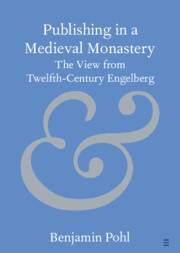
Publishing in a Medieval Monastery
- The View from Twelfth-Century Engelberg
-
- Published online:
- 06 July 2023
- Print publication:
- 03 August 2023
-
- Element
- Export citation
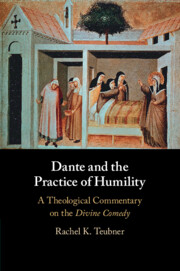
Dante and the Practice of Humility
- A Theological Commentary on the Divine Comedy
-
- Published online:
- 29 June 2023
- Print publication:
- 13 July 2023
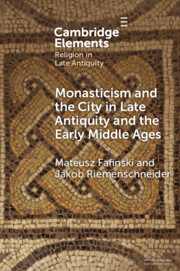
Monasticism and the City in Late Antiquity and the Early Middle Ages
-
- Published online:
- 25 April 2023
- Print publication:
- 18 May 2023
-
- Element
- Export citation
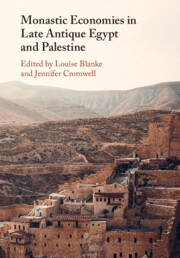
Monastic Economies in Late Antique Egypt and Palestine
-
- Published online:
- 14 April 2023
- Print publication:
- 20 April 2023
13 - Reform of the Religious Orders
-
-
- Book:
- The Cambridge Companion to the Council of Trent
- Published online:
- 02 October 2023
- Print publication:
- 16 March 2023, pp 261-278
-
- Chapter
- Export citation
